
This essay, written by Ron Ozuna, appears in the 2016 Mono Lake Calendar.
Theodore Roosevelt High School had more than 5,000 students on a year-round schedule when we first started going to the Mono Lake Committee’s Mono Basin Outdoor Education Center in 2001. I was part of the Humanitas Program, teaching Environmental Science, and my partner (and wife) Phoebe MacAdams Ozuna, taught Environmental Literature. Together, we developed classes that included an unusual component: a five-day field trip to the Sierra Nevada for students to live, work, and learn about nature, animals, geology, water, and life.
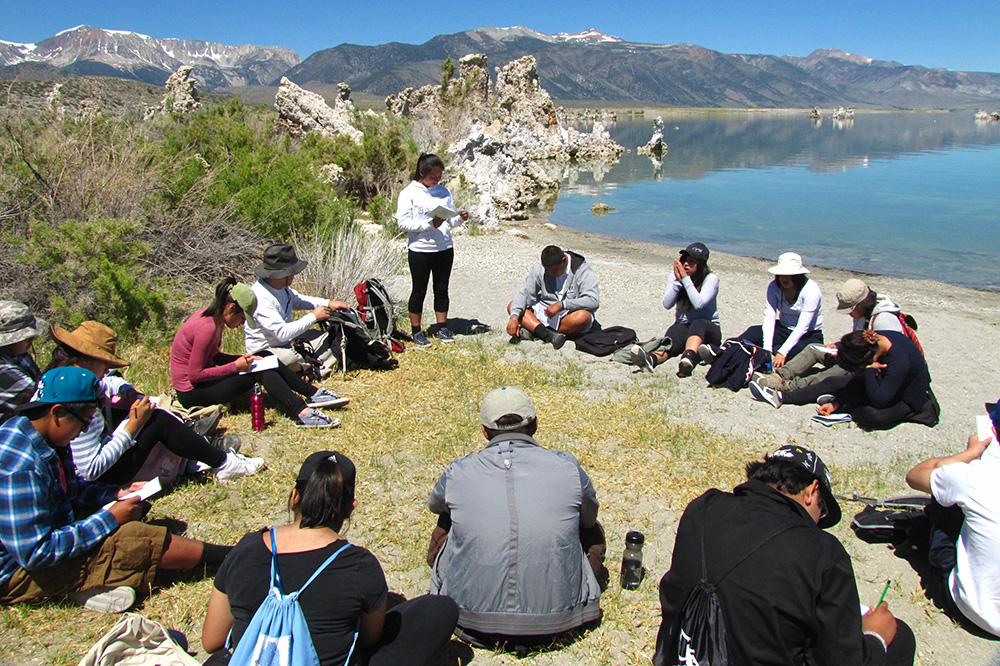
We began planning the first trip by talking to Herley Jim Bowling, the Mono Lake Committee’s Los Angeles Education Coordinator. There were major obstacles—the trip would require the school to pay for three substitute teachers, permission from two school districts, and some serious fundraising. But Herley Jim guided us through paperwork, deadlines, and a payment plan. The principal found funds for subs, and I found teachers who were willing to drive students. The students worked hard and raised the money they needed by selling bags of chocolate-covered peanuts.
That first trip had ten Environmental Science students and three teachers. Driving the 335 miles to Cain Ranch, the Mono Basin Outdoor Education Center (OEC) headquarters, takes over six hours. It was a long drive, and I did not know what to expect once we got there. I just knew that being outdoors in the mountains would provide a new and important experience for these students. They had never experienced sleeping outdoors under the stars, walking trails, learning about terminal lakes, seeing or being in a volcano, walking through a forest alone at night, cooking, making meals, and having time to think about what it all means.
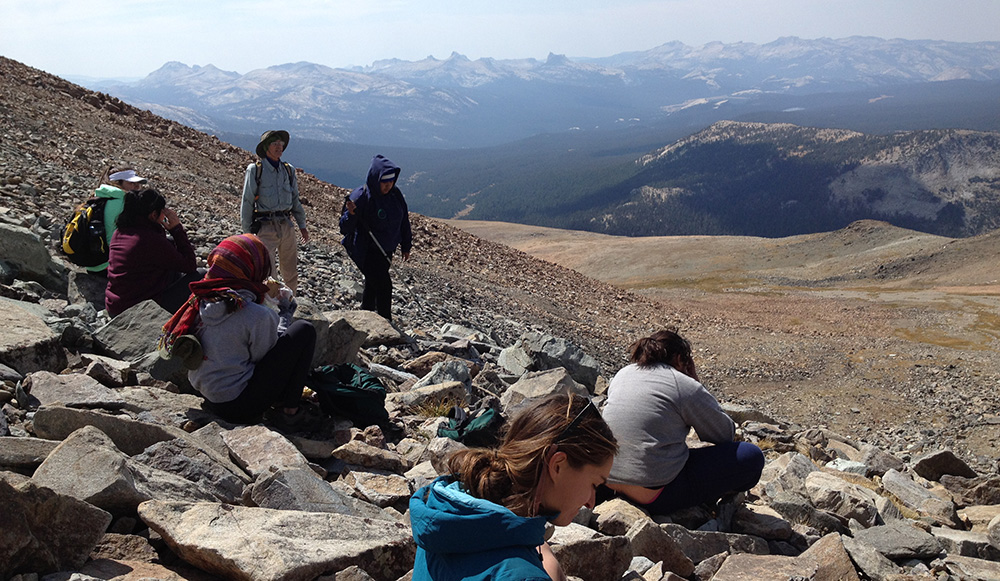
Santiago Escruceria, the Outdoor Experiences Manager, is a Colombian-born outdoor education teacher. He connected immediately with the students, talking to them in their home language, Spanish, as well as English. He and the OEC instructors made them responsible for themselves and their actions every day. They asked the students questions about nature, the environment, and by the last day, each student had begun to understand where they were and what was happening around them on the planet. They started to understand about nature, wildlife, and how we are all connected by water, even in Los Angeles.
We had a closing ceremony the last night with the Native American tradition of the Talking Stick. As each person held the Talking Stick they had the opportunity to express their feelings about their experience. Some of the students talked about their home experiences and their experiences at Mono Lake and what it meant to them to be part of the OEC program. For many, it changed how they viewed themselves and their surroundings. For the first time, they could see a future that was bigger than their small community and some even made new goals for themselves beyond high school. Many saw, for the first time, that graduation was just a beginning and education beyond graduation as a new goal. The things the students shared at the closing circle were so moving, it made me cry.
After the first trip to Mono Lake we debriefed and decided that the OEC program was magic. The location, itinerary, and the staff were all magic. The trip had transformed our students. We could see the change each day in our classrooms, wow!
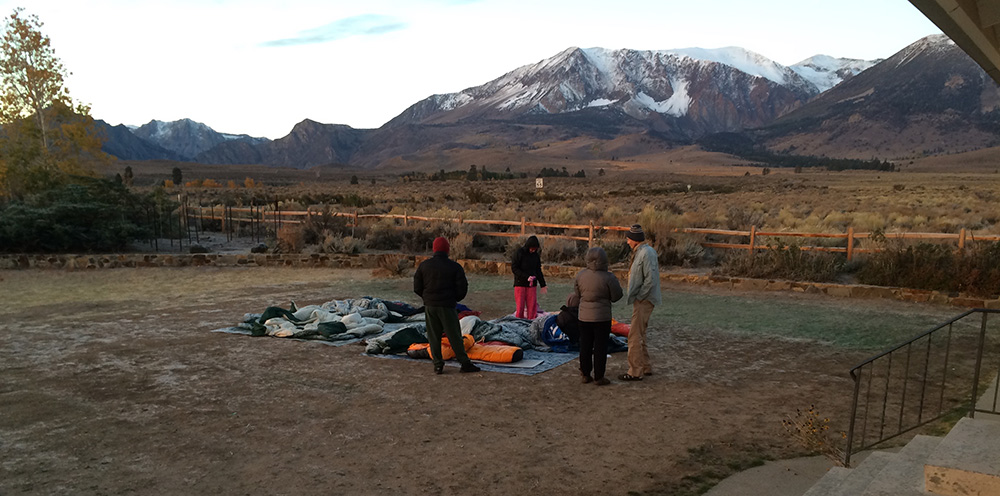
By the second year, a special education student named Jessica learned about the trip from a friend. Though she was not our student, she really wanted to go and asked every day. We talked to her teachers—she did not participate in class, she had very low reading skills (4th grade level), and there were significant family problems. We talked to her special-ed counselor who said it would be good for her to go on the trip—to get away from school and her family for a few days. We decided to take her on the trip, hoping it would help. The students again raised money by selling bags of chocolate-covered peanuts. It was a lot of work, but worth it. That year the best seller was, of course, Jessica. She raised her own money and helped her friend too.
When you arrive at the OEC you have an introduction circle meeting on the living room floor. This is when Santiago gives each student a fun nickname that he uses the entire trip, and sets the tone for the next five days. From there, the activities start—a night hike, canoeing on Mono Lake, swimming, mountain climbing, eating together, and working on stewardship projects together. The whole time Santiago talks to the students, asking questions, making them think and come up with answers. He talks to them about school, the importance of education, nature, animals, plants, water, maps, volcanoes, and the planet. All the students want to be around Santiago because he makes them feel important. Through these experiences, inevitably, the students begin to think about setting goals for school, education, and life.
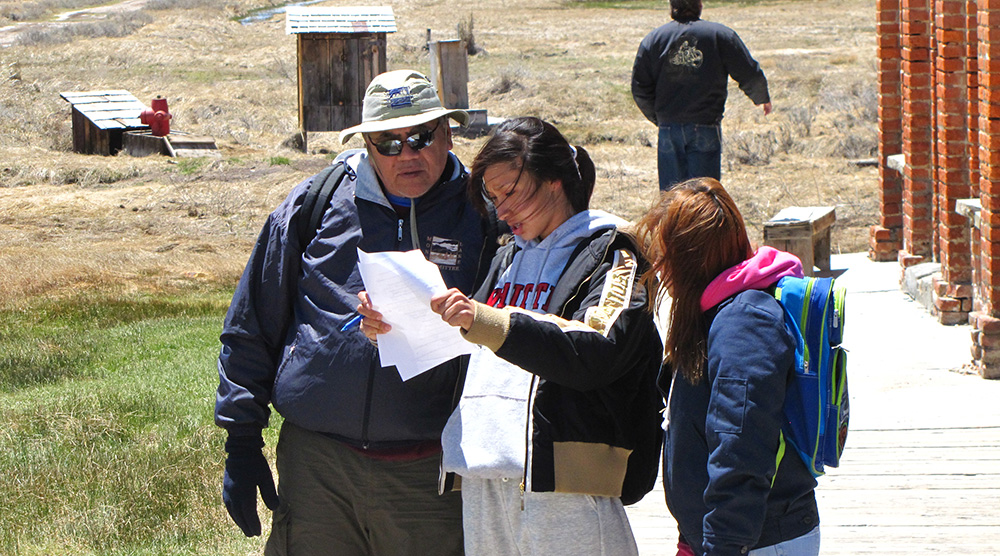
This was a special time for Jessica and we could see her changing—she started to participate more, and to talk to the other students. Each day was an awakening for her, and by the end of the trip, we had witnessed a transformation. On the drive home she talked about school, education, goals, and of course, the trip to Mono Lake. Back at home, Jessica spent a lot of time in Mrs. MacAdams Ozuna’s classroom seeking help and someone to talk to. We referred her to a reading specialist who worked with her to help her improve. She had changed.
Jessica went on three trips to Mono Lake in two years. Each time she returned she became a bigger person, a student with goals for graduation and beyond. She wanted to become a flight attendant and a year and a half after she graduated, Jessica returned to let us know that she had gone to flight attendant school and had become what she had set out to be. The OEC program changed her life forever.
We brought groups of students to Mono Lake for ten years. Four of those years we came twice—14 trips in all. We have endless stories just like Jessica’s from these trips. The OEC program changes lives, and as a teacher, there is no better sign that you’re doing your job well than to see your students grow, learn, and to go on to succeed in this world. It’s magic, it’s Mono Lake.
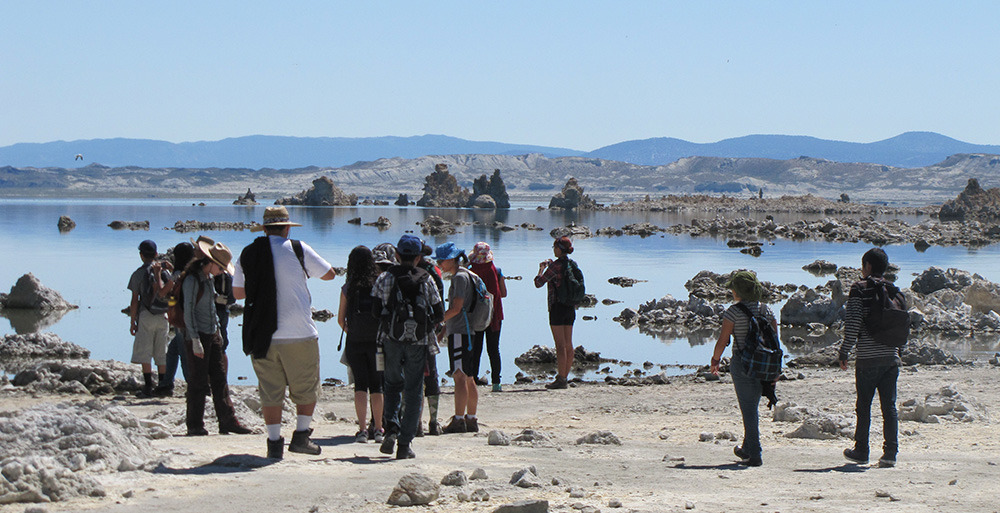
Ron Ozuna was a high school science teacher at Theodore Roosevelt High School for Los Angeles Unified School District for 19 years. He taught Environmental Science, AP Environmental Science, Marine Biology, Biology and 9th Grade Integrated Coordinated Science. Ron retired in June 2011 after 21 years of teaching.

Outstanding and inspirational. What a gift for the young students. Thanks to all involved.